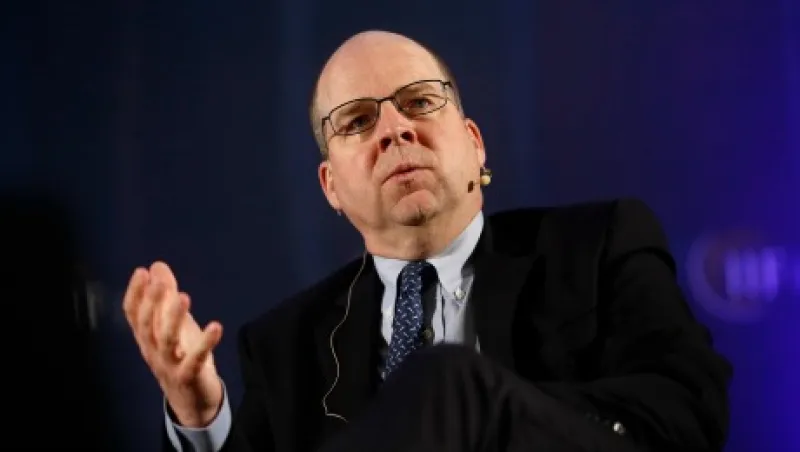In the space of a few weeks this autumn, the betting line among investors on a December rate hike by the U.S. Federal Reserve Board went from a long shot to a strong consensus. Across the pond conditions are very different. With inflation virtually nonexistent and growth still sluggish, president Mario Draghi has made it clear that easy money remains the order of the day at the European Central Bank.
Investors are taking note. “We live in a world of low growth, which probably means monetary policy that’s lower for longer,” says Jay Ralph, Munich-based chair of Allianz Asset Management, the investment arm of the German insurer Allianz. “For investors that leaves no alternative but to take some risk.”
Allianz retains its place at the top of the Euro 100, Institutional Investor’s exclusive ranking of the region’s largest investment managers, with €1.81 trillion ($2.0 trillion) in assets under management on June 30. Its lead over rivals has narrowed, though, reflecting outflows at its U.S. bond specialist arm, Pacific Investment Management Co., following the departure of co-founder Bill Gross last year.
Multiasset strategies, which can invest in equities, bonds and other asset classes, are some of the biggest winners in this search-for-yield world, says Ralph. At Allianz Global Investors, the firm’s London-based arm, such strategies had net inflows of €10.7 billion in the first three quarters of 2015, more than for any other asset class. By contrast, fixed-income strategies had net inflows of €1.8 billion, while equities saw outflows of €500 million. “Multiasset is an income-oriented structure, and the focus is to generate income with a lower risk profile,” says Ralph. “That’s why it’s attractive.”
Other managers report strong demand for less-liquid alternatives such as infrastructure and real estate. “It’s the first year of observing so much interest in illiquid assets,” says Fabrice Chemouny, global head of institutional sales at Natixis Global Asset Management in Paris. The firm remains in sixth place with €812 billion in assets.
Much of the interest in alternatives come from European insurers, which need more long-dated assets to match their liabilities under the European Union’s Solvency II directive, which takes effect in January, says Chemouny. Natixis has seen inflows of €1.6 billion into real estate funds since the beginning of the year, excluding the U.S. Meanwhile, clients from Germany and some other European countries are expressing renewed interest in emerging-markets debt because it looks cheap following recent rises in yields, he adds, a view echoed by other managers.
“Now is absolutely the time to be evaluating emerging-market debt,” says Charles Prideaux, London-based head of institutional business for Europe, the Middle East and Africa at BlackRock, which ranks third with €1.1 trillion in assets.
Elodie Laugel, deputy head of the institutional client group at AXA Investment Managers, the institutional arm of No. 2–ranked AXA Group, says emerging-markets debt has a long-term appeal to European investors. It’s “one of the last liquid things they can diversify into while remaining within their fixed-income bucket,” says Laugel.
An alternative way for investors to respond to the lower-for-longer scenario is to reduce their expected returns. “There’s a little bit of adjustment of expected returns, but they’re coming down in small steps,” says Andreas Koester, Zurich-based head of asset allocation and currency at UBS Global Asset Management, the institutional investment arm of Swiss bank UBS, which repeats in fourth place with €1.0 trillion in assets. Few investors are willing to slash expected returns aggressively, though, so they are trying to fill the gap between today’s low yields and their return targets by taking more risk and pursuing more active strategies, Koester says.






